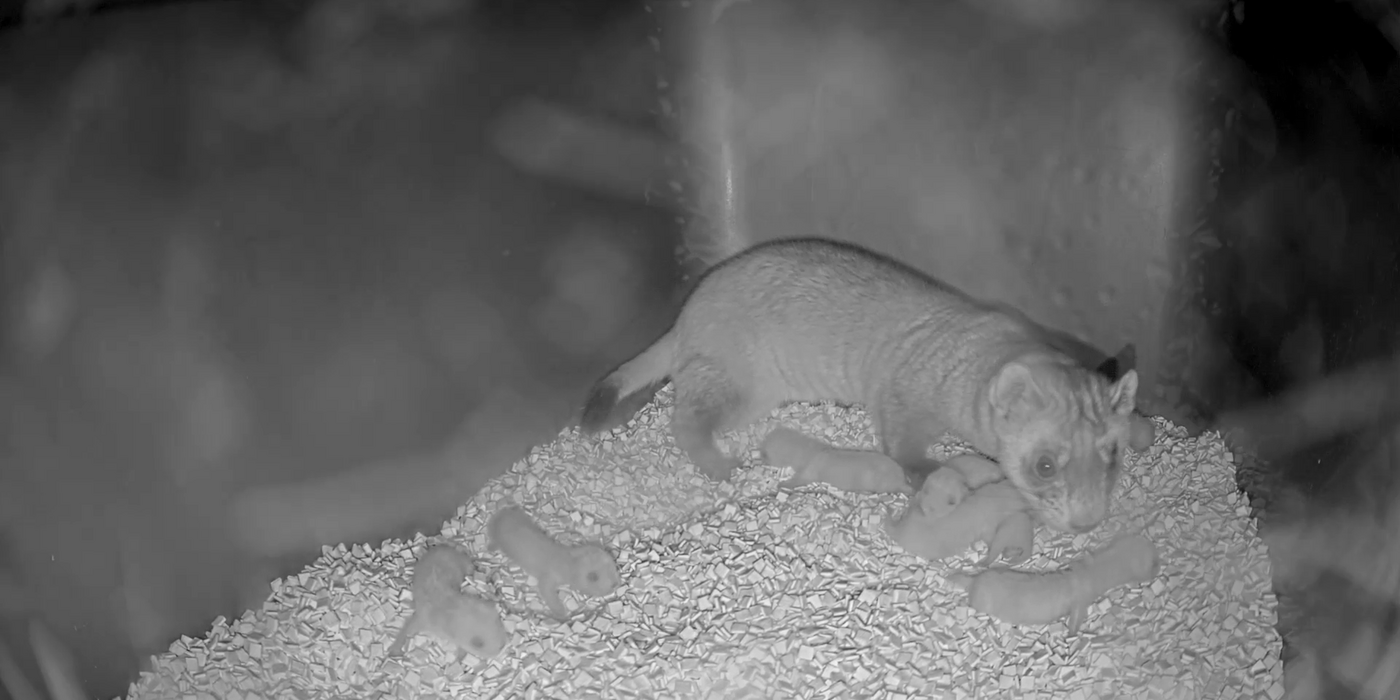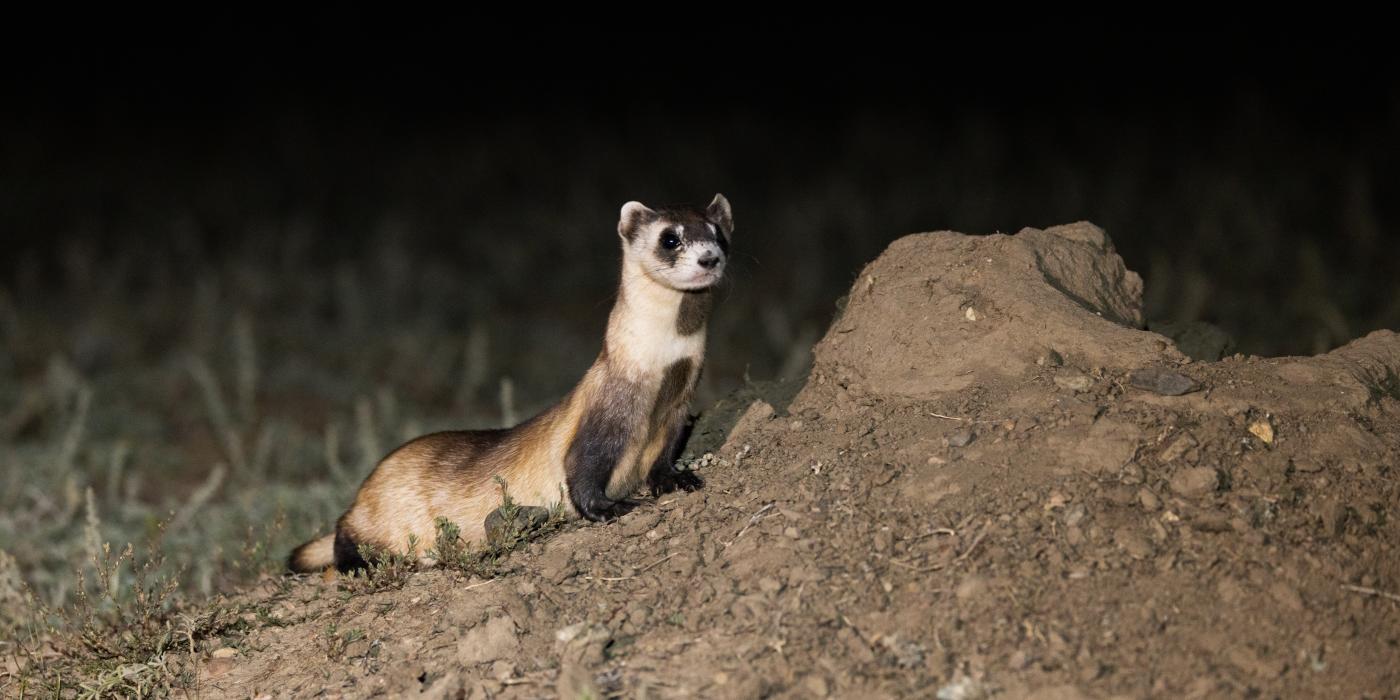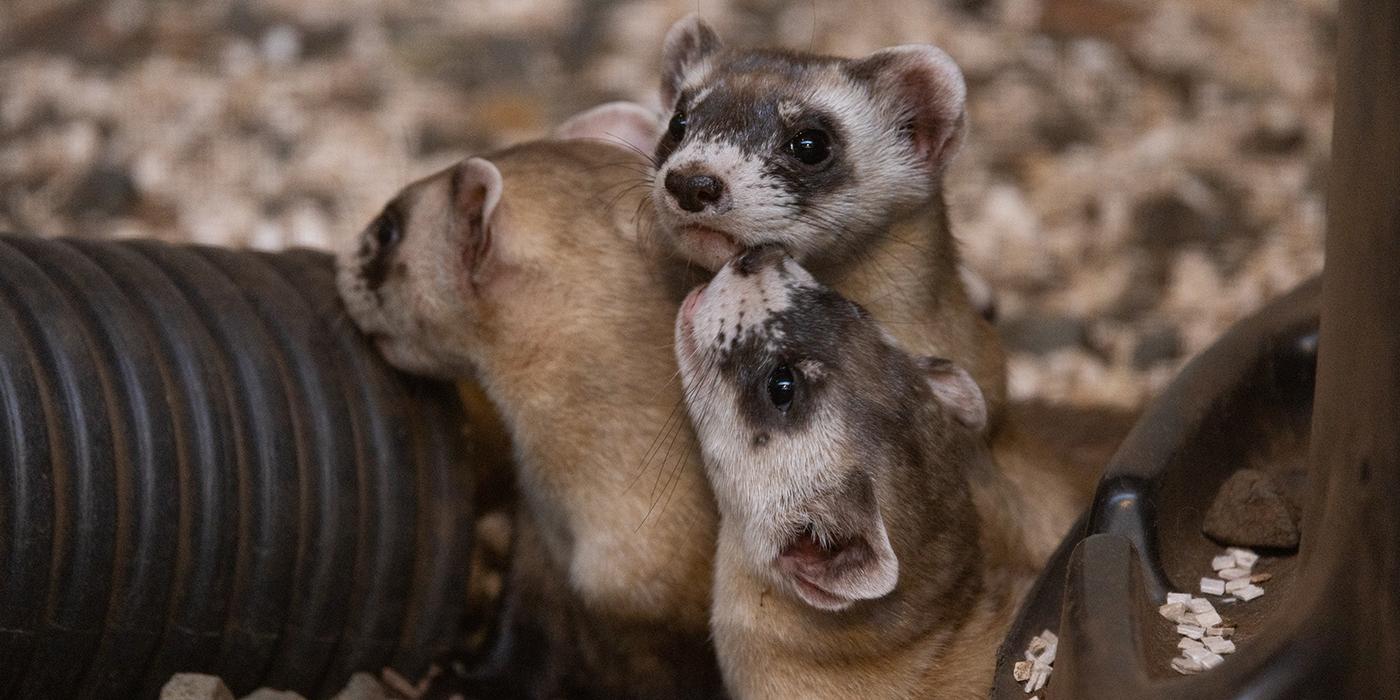How to Care for Black-footed Ferrets

September 26 marks 40 years since black-footed ferrets were re-discovered in the wild, kick-starting today’s breeding and reintroduction program. Find out what it takes to care for Smithsonian Conservation Biology Institute’s (SCBI) black-footed ferrets from animal keeper Vicki Lake!
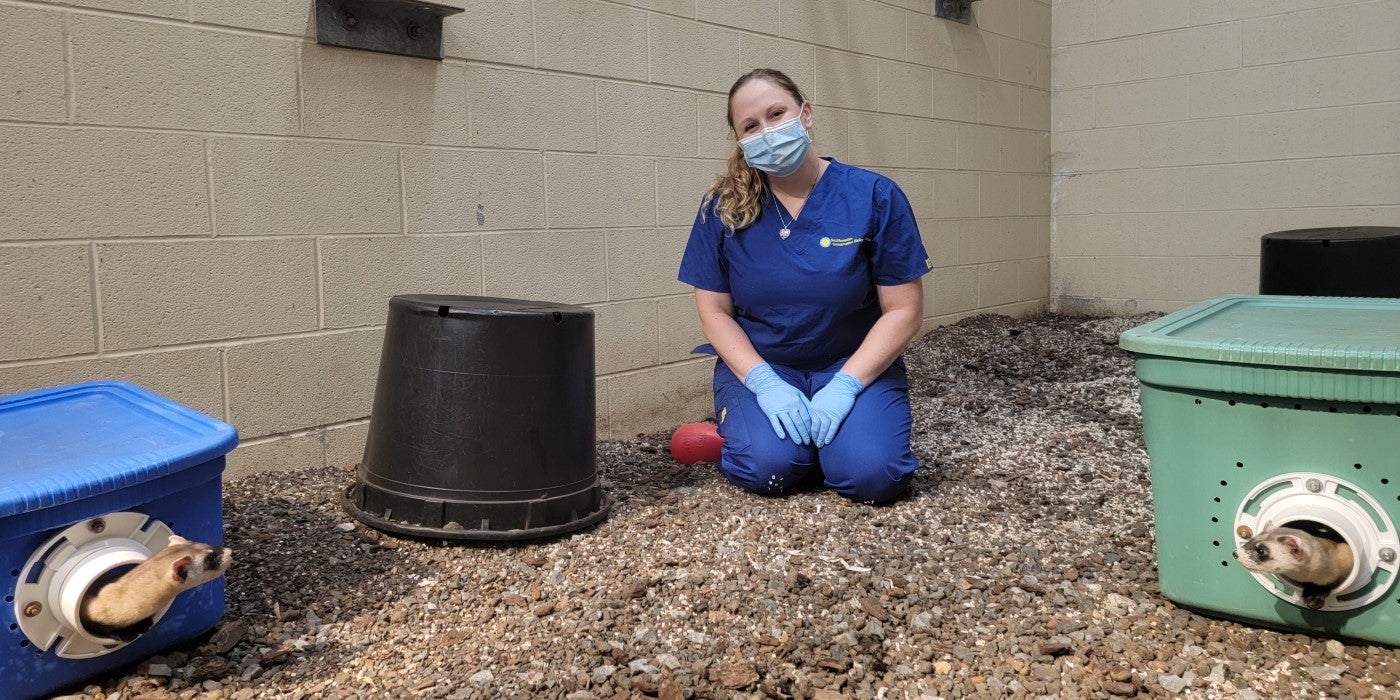
My desk is covered in photos of black-footed ferrets. I have black-footed ferret socks, shirts and ornaments. When I first started in animal care, I wanted to work with great cats in some city far away from where I grew up. But after volunteering at SCBI (which is close to my hometown) and getting experience with black-footed ferrets, I found my true passion.
Despite their small stature, black-footed ferrets are elusive and fierce carnivores. They can also be playful and complete goofballs. Above all, black-footed ferrets are a conservation success. From a very young age, I knew I wanted to make a difference. Thinking about how the animals in my care may one day be reintroduced to the wild is amazing.
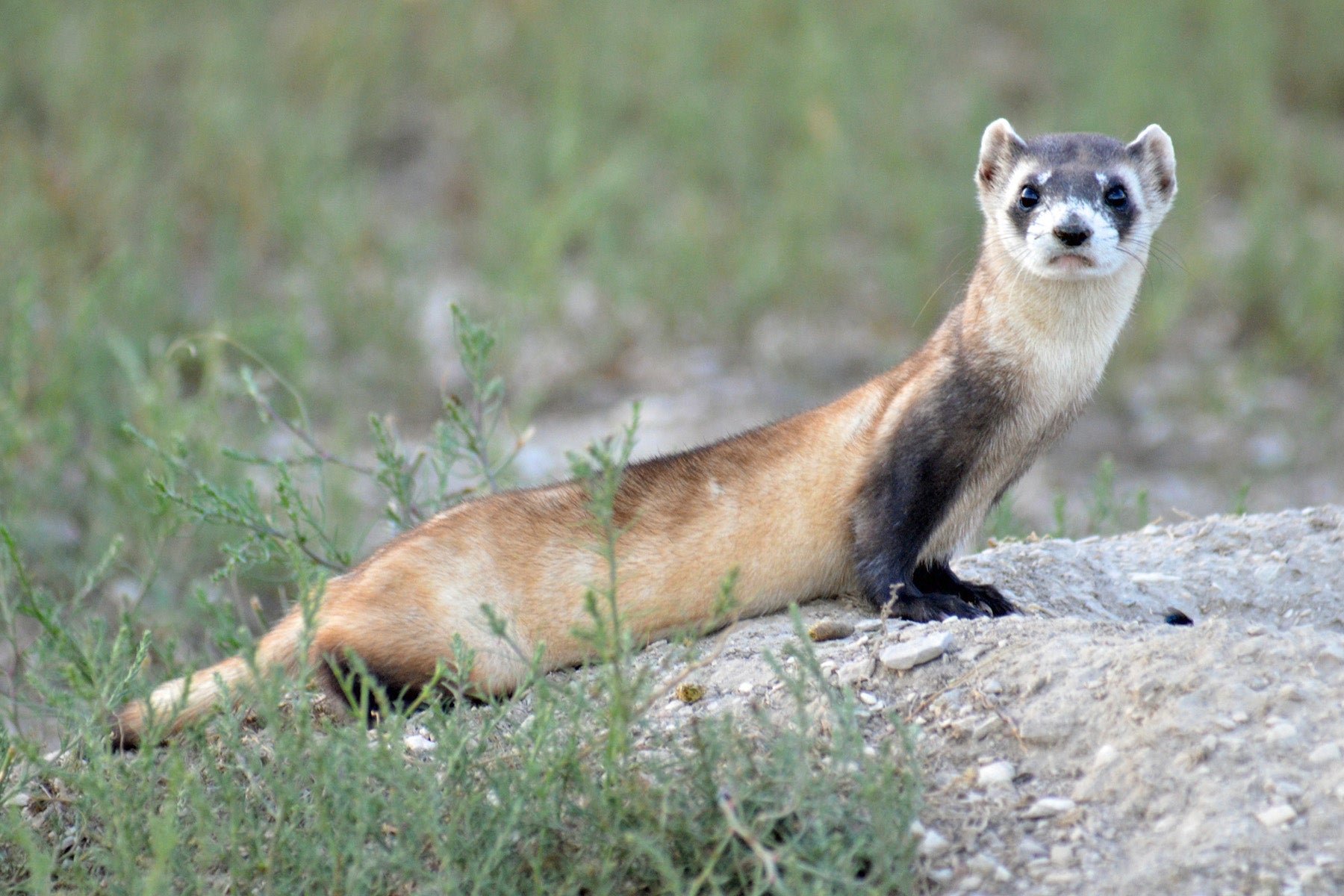
Breeding centers and zoos are at the core of black-footed ferret recovery. Since the late 1980s, breeding centers have helped produce kits for continued breeding and potential reintroduction. Roughly 150 to 200 ferrets from breeding centers are reintroduced to the wild each year.
Zoos provide a home for ferrets who are unsuitable for reintroduction because of medical issues or old age. These black-footed ferrets still play an important role for the species because they act as ambassadors, telling their story and raising awareness of conservation efforts. Black-footed ferrets are just one of about 400 species found on the prairie. By helping ferrets, we save other prairie species too which, in turn, benefits the whole ecosystem.
One of the prairie animals most closely connected to black-footed ferrets is the prairie dog. In the wild, black-footed ferrets live, hunt and reproduce in prairie dog tunnels. In fact, wild black-footed ferrets spend about 90 percent of their time underground. To mimic this environment and lifestyle, we provide PVC pipes and upside-down flowerpots with holes cut into the pot’s base for the ferrets to run, explore and hide in.We also provide the ferrets with different types of play enrichment, which encourages them to stay active. Most of the toys are a product of keeper creativity since you cannot always buy items appropriate for endangered species. One popular enrichment is a paper bag filled with shredded paper. When a ferret approaches the bag to investigate, the bag will “respond” with a crinkle or fall over. We also have weeble-wobble toys and create bouncy tubes by upcycling old materials that our team no longer uses.
By far, our black-footed ferrets’ favorite enrichment seems to be live prey. In the wild, 90 percent of a black-footed ferret’s diet is prairie dogs. At SCBI, they receive rats. It is particularly important for a reintroduction animal to know how to hunt so they can survive without relying on humans. Female ferrets with kits typically get live prey so the kits learn to hunt from their mom just as they would in the wild.
The first few live rats given to a ferret family are usually hunted by the mom while the kits sleep or observe. Last year, one of Lady Edith’s kits, Emily, approached the third live rat we gave the family. As this was Emily’s first encounter with a rat, she did not quite know what to do. She approached the rat and as she smelled it, the rat gently bopped her on the nose with its paw! Clearly startled, Emily ran back to her mom. Lady Edith then showed Emily and the other kits how to properly hunt. Two weeks later, I watched Emily correctly and successfully hunt a live rat on her own.
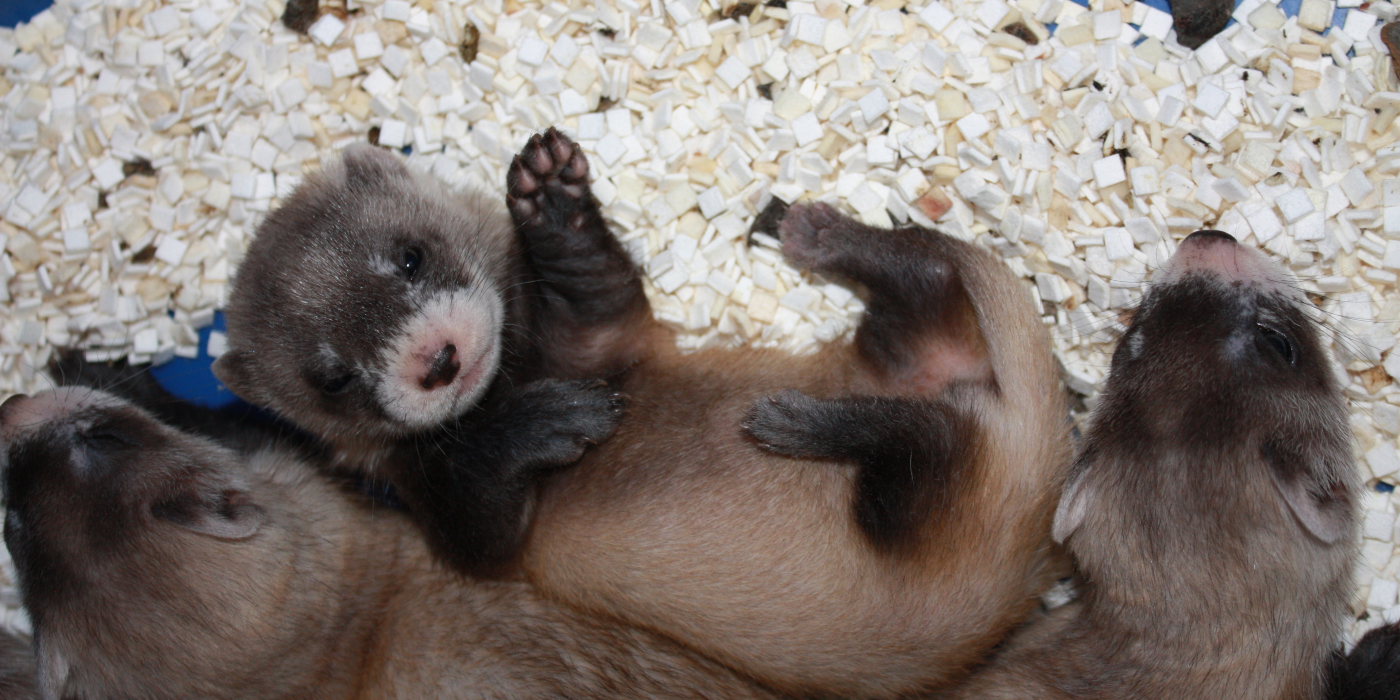
As a black-footed ferret keeper, Vicki is able to watch some ferrets grow from tiny babies to mature, fierce adults and become parents themselves. These kits were born in 2017.
The Species Survival Plan recommended that Emily remain at SCBI, and she became part of our breeding program. This year I watched her teach her two kits how to hunt. Not many animal keepers can follow their animals’ full-life journey. I have the honor of watching some ferrets grow from tiny babies to mature, fierce adults and become parents themselves.
The flip side is black-footed ferret care takers do not get to interact with the animals as closely as other keepers do. Black-footed ferrets are susceptible to many diseases humans carry and encounter, like distemper. Keepers wear different shoes and, even pre-pandemic, surgical masks whenever near the ferrets. Beyond wanting to prevent our animals from getting sick, we also do not want a released ferret to introduce something to the wild population.
The other main reason we minimize our contact with the black-footed ferrets is to discourage them from relying on humans. Ideally, wild ferrets should be fearful of humans so they have a better chance of survival. Whenever I need to clean their habitat, I usually avoid the area of the space they are sleeping or hiding in.
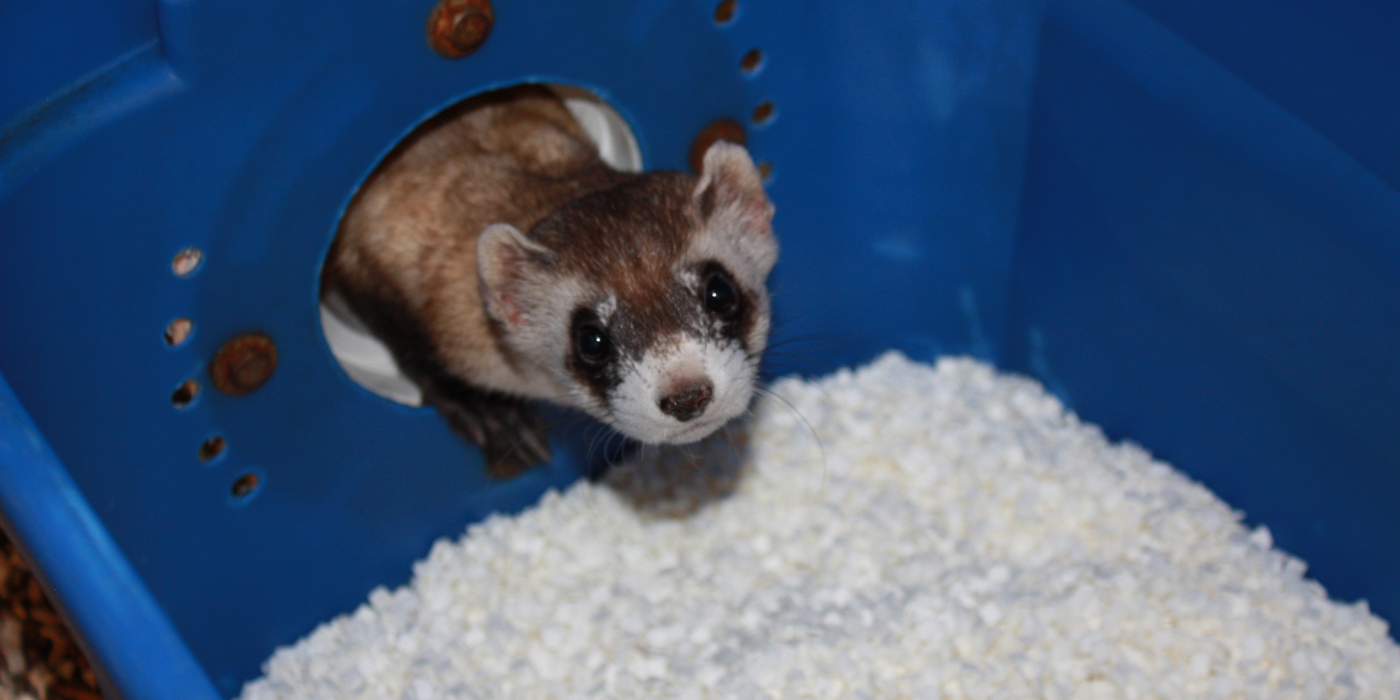
I still get to witness some amazing moments. One of the first ferrets I ever worked with was a male named Kai. He earned the nickname “Lady’s Man” because he was a very successful breeder. However, what I loved most about him was how he did not seem to mind keepers’ presence. He would investigate, play and do the “ferret dance” — when a ferret arches its back and hops backward with its mouth wide open — whenever he wanted. Seeing him be his goofy self made anything I was worried or stressed about in the moment just wash away.
Kai reminded me how lucky I was — and still am — to be a part of these animals’ lives and journeys.
Get to know the 2021 ferret family that was featured on the Black-footed Ferret Cam in these updates.
Related Species:

